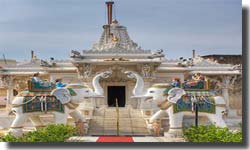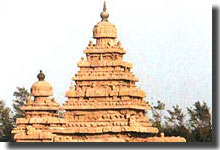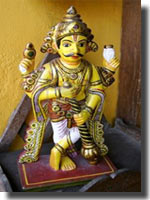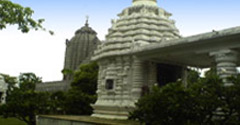Location :
Significance of the temple
For the construction of the temple, architects, carvers and workers were brought in from Rajasthan. The main prayer hall has exquisite glasswork which is a rare sight in South India. A unique feature of this Jain temple is that Jain acharyas (priests) walk all the way from North India to visit and stay here for 'Chatur Masa'.
The innumerable Jain Shrines that dot in India speak of a myriad intimate association with the lives and activities of the Jain Tirthankars (Jain religious preachers), who spread the message of peace, non violence, love and enlightenment.
The Jain presence in Tamil Nadu consists on the one hand of ancient Digambara communities of the South, and on the other hand of immigrant merchant communities from Western India. Jain Temples of this region make up for a rich heritage still unrecognised.

The essence of this great religion and its preaching is palpable in the cave temples, in the elaborately decorated carved stones and in the numerous illustrated manuscripts. Jainism might have originated in North India. But it has 1000-year history in South India, and particularly in Tamil Nadu. The several monuments scattered in the main peninsular region of the Indian subcontinent only confirm this. There are many Jain shrines, images, and monasteries carved in the hills of Tamil Nadu.

The caves between the 2nd and Ist centuries B.C. The names of the monks who have been living in these cave-dwellings and the men who carved them are engraved on these monuments.
The stone beds in these caves prove that they were abodes of the monks. There are several flat stones in theses caves. One end of these horizontal rocks is slightly raised as headrest. The upper portions of the caves are shaped in such a way as to prevent rainwater from entering them. Wooden poles were driven into holes on the ground in front of these caves, and thatched roofs were erected on them. These residences were located near water sources to meet the basic need of the ascetics.

The support of the kings ensured the fast spread of the Jain religion in Tamil Nadu. Several Jain monks were great Tamil scholars too. There are many compositions which have earned a special place in Tamil literature.
| However, the Bhakti movement that gained momentum in Tamil Nadu in the 7th century A.D. revived the Hindu religion. This resulted in Jainism losing its hold in the region. However, some shrines, images, caves, and viharas are largely intact, except for the ravages of nature. | Nearby tourist places to Parsvanatha Temple
Chennai Kanchipuram |
 |
How to Reach the Temple
- Through Airways- Chennai has an airport with both domestic and international terminals. Regular flights connect Chennai with the major cities within the country and also with countries like USA, Singapore, U.K, etc.
- Through Railways -Chennai is well connected by rail with the important towns and cities within and beyond the state.
- Through Roadways -State transport buses and private buses connect Chennai with the major towns and cities within the country. For local transportation, local trains, city buses, auto rickshaws and taxis are available.



